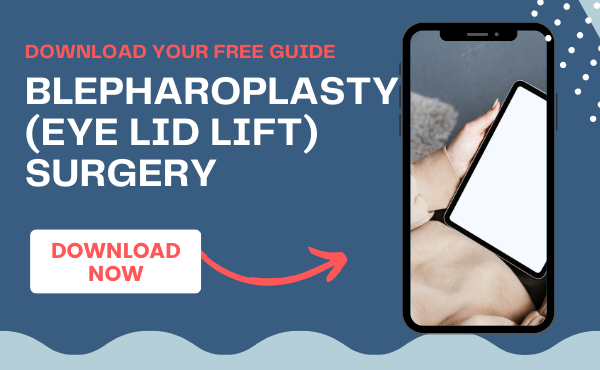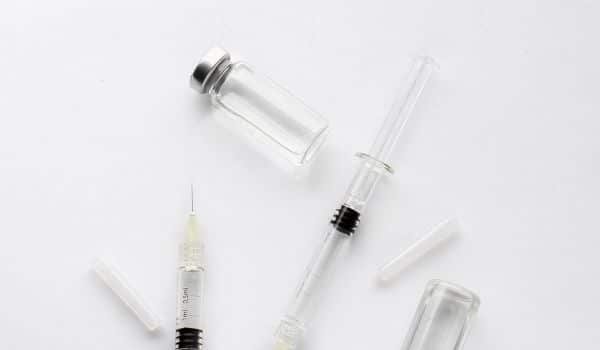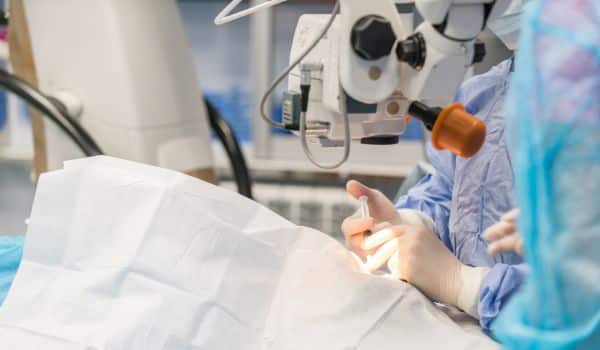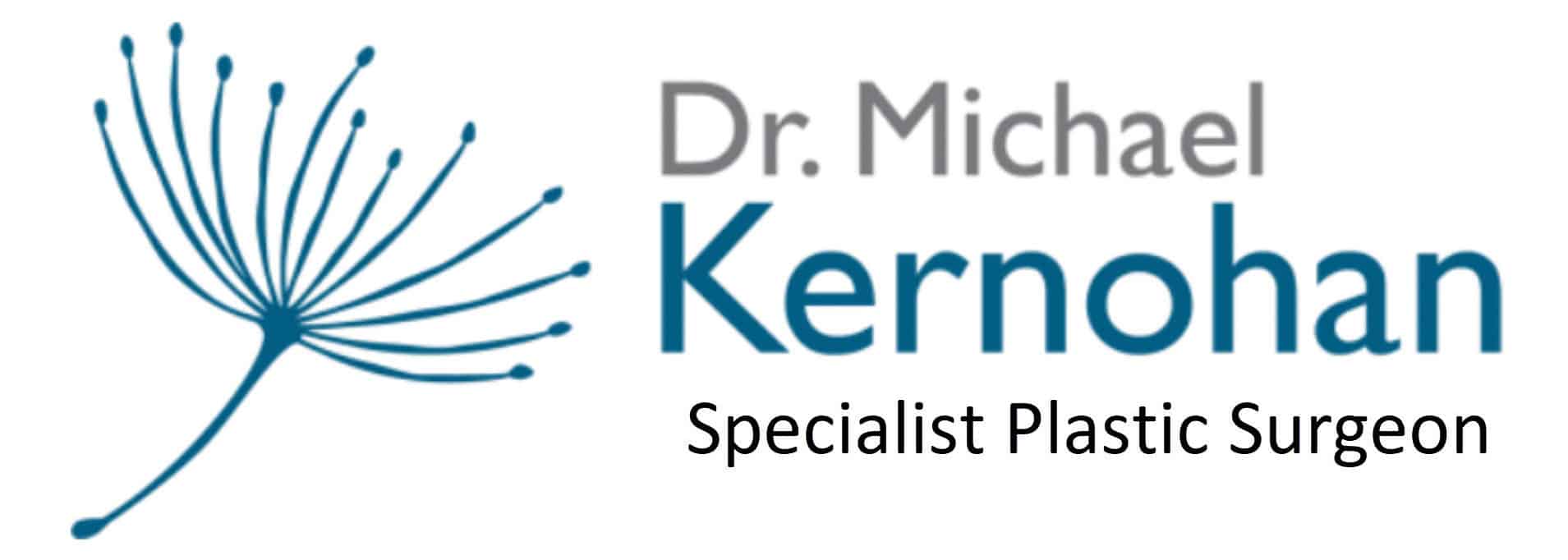Causes and Solutions for Heavy Eyelids
Heavy eyelids are more than just a reminder of a late night or an overly long meeting.
When we talk about ‘heavy eyelids’, we’re referring to the drooping of the upper eyelids, a condition medically referred to as ptosis or dermatochalasis. Ageing, while being a major contributor, shares the stage with other factors such as genetics and lifestyle choices to cause heavy eyelids.
Sydney Plastic Surgeon Dr Michael Kernohan is a highly experienced surgeon performing blepharoplasty and other facial surgery in Sydney’s Southwest Suburbs and the Southern Highlands NSW.
Take the Quiz
Causes of Heavy Eyelids
Like numerous health-related conditions, heavy eyelids don’t have a singular cause. Instead, they’re the outcome of several intertwined factors, each contributing its strand to the complex web.
- Ageing
Ageing stands as a prominent cause of heavy eyelids. As time marches forward, so do the effects on our body, particularly our skin. The skin’s elasticity decreases with age, leading to sagging or drooping in certain areas. This is pretty obvious on the face, specifically around the eyes, where the skin is thinner and more delicate, making it more susceptible to the changes induced by ageing. The levator muscle, responsible for lifting the upper eyelid, can also weaken over time, leading to the condition known as ptosis or droopy eyelids.
- Genetics
Our genetic blueprint, the code that forms the basis of our physical characteristics, can also be a cause of heavy eyelids. Some individuals might inherit a predisposition to weaker eyelid muscles or faster skin ageing. These genetic traits can lead to an earlier onset of heavy eyelids or a more pronounced manifestation of the condition.
Early Signs of Heavy Eyelids
The first and most noticeable sign of heavy eyelids is a consistent feeling of fatigue or strain in your eyes, even after a good night’s sleep. Your eyelids may feel weighty, as if they’re being pulled down. This can be accompanied by an increased difficulty in keeping your eyes open, especially towards the end of the day.
Your eyes may not appear as open as they once did, making you look constantly tired or uninterested. This change may be more apparent when you compare current pictures with those from a few years ago.
Another common sign is the frequent need to raise your eyebrows to lift your eyelids or reduce the heaviness. This involuntary action might lead to the formation of forehead wrinkles, another hint that your eyelids are heavier than they used to be.
In some cases, the drooping may start interfering with your vision, particularly your peripheral vision. You might find yourself tilting your head back to see more clearly, or you might struggle with tasks that require a wide field of vision, such as driving.
There could also be physical discomfort, such as eye irritation, or aching around the eyes. Some people also experience increased tearing or discomfort while wearing contact lenses.
Impact of Heavy Eyelids on Daily Life
Heavy eyelids, though seemingly a minor inconvenience, can cast a shadow over daily life, affecting you in ways that are more than just skin deep.
- Visual impairment
The most evident and significant impact of heavy eyelids is the potential hindrance to your vision. Excessive drooping can obscure your field of vision, particularly your peripheral sight. This can make daily tasks like reading, driving, or simply navigating your surroundings more challenging.
- Aesthetic changes
Heavy eyelids can alter your facial aesthetics, giving a tired or aged appearance.
- Physical discomfort
There can also be physical discomfort associated with heavy eyelids. This can range from a persistent feeling of fatigue or strain in the eyes, to aching, irritation, or increased tearing. If you’re a contact lens wearer, the condition might make it uncomfortable to use them.
- Increased effort
In an attempt to mitigate the effects of heavy eyelids, you might find yourself frequently raising your eyebrows to lift the eyelids, which can lead to forehead fatigue. You may also find yourself needing to adjust your head or eye position to see clearly, which over time, can result in neck strain or headaches.
- Lifestyle modifications
Depending on the severity of your symptoms, heavy eyelids may necessitate changes in your lifestyle. You might need to limit activities that strain your eyes, such as prolonged screen use. In severe cases, activities that require a broad field of vision, like driving, might become risky.
Click to Download Dr Michael Kernohan’s Blepharoplasty Guide

Treatment Options for Heavy Eyelids
From non-invasive lifestyle changes to surgical solutions, there are treatment options available for heavy eyelids. Here are some of them:
Non-Surgical Options

In the realm of non-surgical treatments for heavy eyelids, injectables and fillers have emerged as a viable option. These minimally invasive procedures can offer significant improvements, without the downtime associated with surgery.
- Muscle relaxant injections
Botulinum Toxin is a popular non-surgical treatment for various cosmetic concerns, including heavy eyelids. Muscle relaxant injections work by blocking nerve signals in the muscles where the substance is injected. When injected into specific muscles around the eyes, it can relax these muscles, subtly lifting the eyebrows.
The results can be quite natural, leaving you with a refreshed and alert appearance. The effects typically last between 3-6 months, after which repeated treatments are required to maintain the results.
- Dermal Fillers
Dermal fillers are another option to consider when looking for non-surgical solutions. Fillers composed of hyaluronic acid can be used to add volume and support to the brow and upper eyelid area. By plumping up this area, the weight of the heavy eyelids can be counterbalanced, leading to a lift in the upper eyelid and reducing the appearance of droopiness.
Like muscle relaxant injections, the effects of dermal fillers are temporary and require repeat treatments to maintain the results. The results of dermal fillers can last from 6 months to 2 years, depending on the type of filler used and individual response.
While both these options provide a non-surgical approach to heavy eyelids, they do not replace the need for surgery in cases of significant droopiness or if the condition is affecting vision.
Surgical Options
When non-surgical options don’t provide the desired results, or when the heavy eyelids significantly impact your vision or quality of life, surgical interventions may be considered.
- Blepharoplasty

When it comes to a definitive solution for heavy eyelids, blepharoplasty is often the go-to surgical option. This procedure, also known as an “eyelid lift,” aims to give your eyes a rejuvenated appearance by addressing the issues that cause heavy eyelids.
Blepharoplasty can be performed on the upper eyelids, lower eyelids, or both, depending on the patient’s needs. In the case of heavy eyelids, the focus is on the upper eyelids.
During an upper eyelid blepharoplasty, the plastic surgeon makes an incision along the natural crease line of the eyelid. This strategic placement ensures that the scar remains hidden and is not noticeable when the eyes are open. Through this incision, your plastic surgeon removes or repositions excess skin, muscle, and fat causing the heaviness and droopiness. The incision is then closed with sutures, leaving the eyelids looking more open and refreshed.
The procedure can be performed under local anaesthesia or general anaesthesia, depending on the patient’s health and preference, as well as the complexity of the procedure.
Recovery from blepharoplasty takes a few weeks. Initially, there might be bruising and swelling, but these subside gradually.
The results of a blepharoplasty are long-lasting. While the procedure does not halt the ageing process, it effectively turns back the clock, and the eyelids should continue to age naturally from this new starting point.
- Ptosis repair
While blepharoplasty targets excess skin, muscle, and fat in the eyelids, ptosis repair focuses on a different aspect of the problem: a weakened levator muscle.
Ptosis, also known as droopy eyelids, is often due to a weakening or dysfunction of the levator muscle, the primary muscle responsible for lifting the upper eyelid. Ptosis repair is a surgical procedure designed to strengthen or reattach this muscle, effectively raising the eyelid to a more normal position.
Your plastic surgeon will make a small incision in the natural crease of the eyelid, through which they will tighten or reattach the levator muscle. The exact technique used can vary depending on the severity of the ptosis and the strength of the levator muscle.
Ptosis repair can be performed under local anaesthesia or general anaesthesia. In many cases, the procedure can be performed as an outpatient surgery, allowing you to return home on the same day.
Recovery from ptosis repair is relatively quick, with most patients able to return to their regular activities within a week or two. Initially, there may be some swelling, bruising, or discomfort, which will subside over time.
The results of ptosis repair can be long-lasting and even permanent, effectively correcting the droopy eyelid and improving the overall appearance of the eyes.
Prevention of Heavy Eyelids
While ageing and genetics – two significant contributors to heavy eyelids – are inevitable and unmodifiable, there are still several proactive steps you can take to prevent or slow the onset of heavy eyelids. Here are some key preventative measures:
- Ensuring you get sufficient and quality sleep can help maintain the health of your skin, including that of your eyelids. Sleep deprivation can lead to puffiness and drooping, so aim for at least 7-8 hours of sleep per night
- Consuming a balanced diet rich in fruits, vegetables, lean proteins, and healthy fats can nourish your skin from within
- The skin around your eyes is particularly sensitive to the damaging effects of the sun. Wearing sunglasses and using sunblock can protect this delicate area, delaying signs of ageing such as wrinkles and drooping eyelids
- Spending prolonged periods in front of digital screens can cause eye strain and fatigue, contributing to heavy eyelids. Make sure to take regular breaks from screen time, and consider using blue light filters if you have to work on screens for extended periods
- Smoking accelerates the ageing process of your skin due to the damaging effects of free radicals produced by tobacco. Quitting smoking can prevent premature skin ageing
FAQs about Heavy Eyelids

What causes heavy eyelids?
- Heavy eyelids can be caused by various factors, including ageing, genetics, lifestyle choices like smoking or excessive alcohol consumption, sun damage, and certain medical conditions such as hypothyroidism. The ageing process leads to a loss of skin elasticity and muscle tone, which can result in a drooping appearance of the eyelids.
Are there any non-surgical treatments for heavy eyelids?
- Yes, there are several non-surgical treatments for heavy eyelids. These can include lifestyle changes such as improved sleep habits, a healthy diet, and reducing screen time. Certain exercises can also strengthen the eyelid muscles. Additionally, treatments like muscle relaxant injections and dermal fillers can be effective in reducing the appearance of heavy eyelids.
What does a blepharoplasty procedure entail?
- Blepharoplasty works by eliminating the excess skin, muscle, and sometimes fat from the eyelids. The procedure is performed under local or general anaesthesia. During the procedure, your plastic surgeon will make an incision along the natural crease of the eyelid to minimise visible scarring.
What is the recovery process like after an eyelid surgery?
- Recovery from an eyelid surgery like blepharoplasty or ptosis repair takes a few weeks. Initially, patients might experience swelling, bruising, and discomfort, which gradually subsides.
Further Reading about Face Procedures with Dr Kernohan
- Read Dr Michael Kernohan’s Chin Surgery Page
- Read Dr Michael Kernohan’s Lower Eyelid Surgery Page
- Read Dr Michael Kernohan’s Blog about Blepharoplasty vs Forehead Lift
- Read Dr Michael Kernohan’s Blog about Can you Fix Chubby Cheeks ? – Options for a Slimmer Face
- Read Dr Michael Kernohan’s Blog about Recovery after Eyelid Surgery – Healing after Blepharoplasty
- Read Dr Kernohan’s Blog about Will Medicare Cover Eyelid Surgery?
Read Dr Kernohan’s Blog about Eyelid Ptosis – How Eyelid Surgery Can Help Droopy Eyes - Read Dr Kernohan’s Blog about Eyelid Surgery in Your 30s, 40s, 50s and 60s
Medical References about Heavy Eyelids
- How To Fix Droopy Eyelids, Circles and Sags – Cleveland Clinic
- Ptosis – NCBI
- Upper Eyelid Blepharoplasty – NCBI
- Eyelid Reduction Surgery – Australasian Society of Aesthetic Plastic Surgeons





